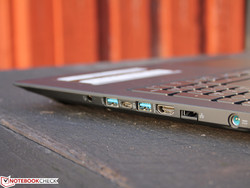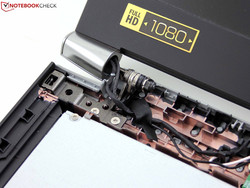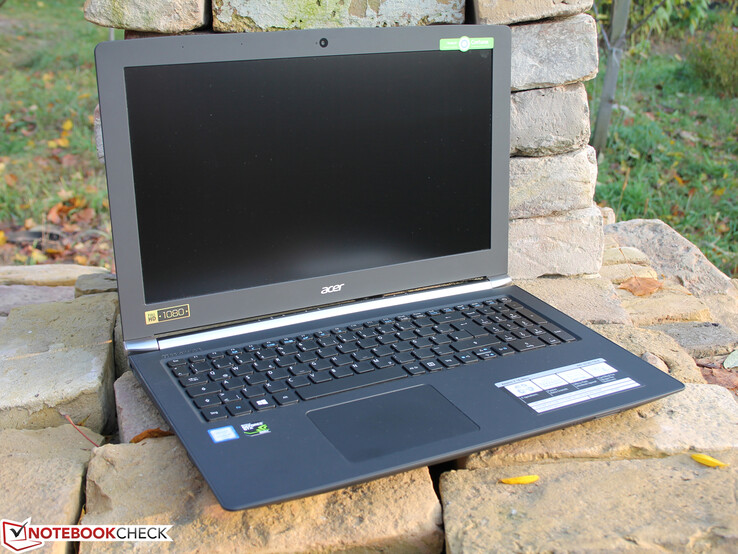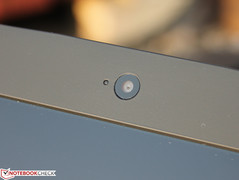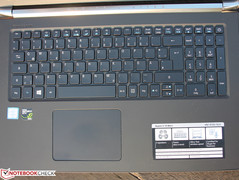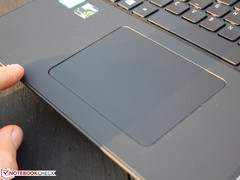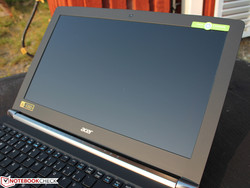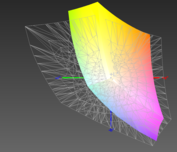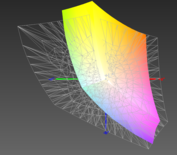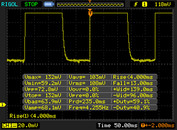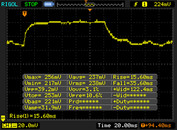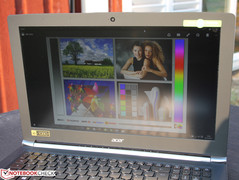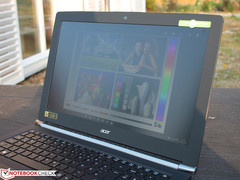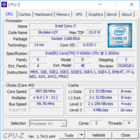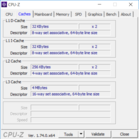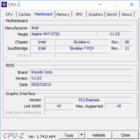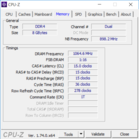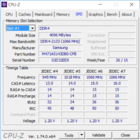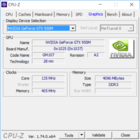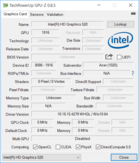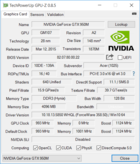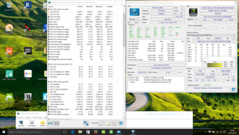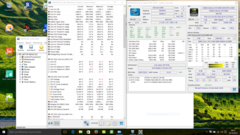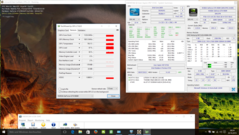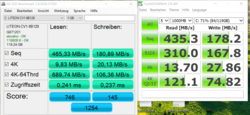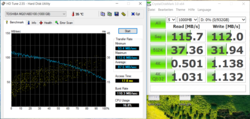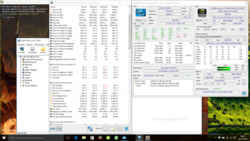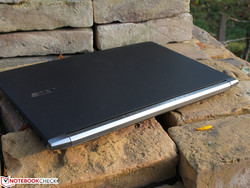Acer Aspire V 15 Nitro VN7-572G-72L0 Notebook Review

For the original German review, see here.
Exactly one year ago, in October 2014, we had the first Acer Aspire V 15 Nitro (VN7-591G-77A9) in our test lab. At the time, Acer exhibited understanding for the needs of its customers and offered a scalable 15-inch (and 17-inch) Nitro in an appealing casing that could be furnished with different graphics cards (GT 840M, GTX 860M), different CPU models (15-watt ULV & 47-watt standard), as well as different SSD-HDD combinations. Acer also created a platform on the market that covered both the mainstream and high-end sector with prices ranging from almost 700 Euros up to 1500 Euros (~$761 to $1630).
In any case, the customers received a first rate, matte IPS screen in at least FHD or, for a surcharge, 3840x2160 pixels (4K Black Edition). The laptops have been sold in high quantities to date, received many reviews and awards and, as far as we can judge, have been the most successful laptop lineup on the German market in 2015.
That was enough incentive for Acer to follow-up these achievements with a successor, and to launch an attractively priced and scalable laptop. Our Aspire VN7-572G-72L0 is the normal version (not Black Edition) with the low-voltage Skylake processor Intel Core i7-6500U (15 watts, 14 nm) and GeForce GTX 950M. The "old" Haswell Nitro 15 was also furnished with the GeForce GTX 950M while the standard voltage Black Edition featured a GTX 960M.
The supplied combination of a 1 TB HDD + 128 GB SSD is no longer an innovation as they have been in use since late 2014. However, the SSD is now at the start with SATA 600. The working memory is dubbed DDR4, and peripherals can be connected via USB Type C without worrying about which side is up. The review sample is a premium range configuration with a price currently set at 1200 Euros (~$1304). We will naturally examine the cheaper model based on an i5-6200U, a 1 GB HDD, GeForce 945M and hard drive just as closely as the Black Edition with an i7-6700HQ and GTX 960M or 945M. We will shortly link the corresponding reviews in the following chart.
| Model | Size (") | CPU | GPU | HDD/SSD | Price |
|---|---|---|---|---|---|
| Acer Aspire V Nitro VN7-572G-72L0 | 15" | i7 6500U | GTX 950M | 1TB+SSD | 1200 Euros |
| Acer Aspire V Nitro Black Edition VN7-792G-55SF | 17" | i5 6300HQ | 945M | 1TB SSHD | 999 Euros |
| Acer Aspire V Nitro VN7-572G-54YG | 15" | i5 6200U | 945M | 1TB HDD | 900 Euros |
| Acer Aspire V Nitro Black Edition VN7-792G-74Q4 | 17" | i7 6700HQ | GTX 960M | 1TB SSHD | 1300 Euros |
Some members of the multimedia sector better get ready for a rough ride. The laptops are still based on Haswell, but will likely be updated with Skylake in the next few weeks or months. All three feature high-quality IPS screens, and all in non-glare Full HD.
- Asus GL552JX-CN154H (i7 4720HQ, GTX 950M, 128 GB SSD)
- Asus N551JW-CN094H (i7 4720HQ, GTX 960M, 128 GB SSD)
- MSI PE60-2QEi581 (i5 4210H, GTX 960M, 1000 GB)
- MSI GP72 2QE Leopard Pro (i7 5700HQ, GTX 950M)
Among the genuine gaming machines, fixed to at least a GTX 960M GPU and the corresponding manufacturer's positioning, these two models are out of reach for Acer's Nitro V 15. However, we will nevertheless compare the IdeaPad Y50-70 for classification.
- Gigabyte P55W V4 (i7 5700HQ, GTX 970M)
- Lenovo IdeaPad Y50-70 (i7 4710HQ, GTX 960M)
Case
Kudos! Acer has created a laptop chassis that is pleasant to the touch and conveys an appropriate quality feel even without aluminum applications and brushed metal. The construction does not look much different from that of the 2014 V 15 Nitro. A Type C USB replaces one USB port, the status LEDs for battery and power-on are now on the front beside the card reader. A recess replaces one rubber stopper on the underside. Those are the only differences - why should a successful chassis be extremely reworked anyway?
The bar above the keyboard with the "Aspire V Nitro" logo is still made of plastic, just like the covers of the outer hinges. This laptop does not open from the underside, as we illustrate in the screenshots below, but from the upper side. The chassis is composed of one solid tray that is closed by a lid made of a keyboard and wrist rest.
Seen alone, the tray is a relatively pliable part. It becomes a stiff, adequately solid chassis that neither creaks nor twists significantly only when screwed to the keyboard unit. In our opinion, the way the flexible single parts create a rigid whole in their sum is a small engineering feat. The trick is the metal plate under the keyboard that creates a firm wrist rest, firm keyboard stroke, and keeps the laptop base in shape.
The lid is a showpiece in terms of torsional stiffness; its flexibility is limited and does not cause image distortions. The matte, structured and somewhat "soft" feel of the lid's surface is perfectly in line with the chassis and work area. All these rubber-coated surfaces are dubbed "Soft Touch" by Acer.
Connectivity
The Skylake chipset includes a USB 3.0 controller (Skylake USB 3.0 xHCI controller) that - like the name suggests - does not yet support transfer rates of 3.1 (up to 1212 MB/s). The USB Type C port is consequently only an alternative in case an external device is connected to this reverse-proof port. Acer would have had to install an additional 3.1 controller to make the aforesaid extreme transfer speed possible. The Type C port is theoretically compatible with Thunderbolt 3 providing that a device operates with a corresponding controller. That is not the case in the Nitro V 15, but will be a feature of the upcoming Dell XPS 13 and 15.
We test the performance of the incorporated Realtek RTS5129 USB card reader with our Toshiba Exceria Pro SDXC 64 GB UHS-II reference SD card. The maximum transfer rate is just below 30 MB/s when copying large data blocks, while 15 MB/s can be expected for common JPG image files (approx. 5 MB each). That is a bad outcome for an SD reader and is due to its USB 2.0 standard.
Communication
The wireless module is from Qualcomm (QCA6174 a/g/n/ac), which is unusual. It is a modern AC chip that can transmit via two channels. Acer has apparently installed good antennas in the display bezel. The Nitro V 15 easily reached our 45 meter (~148 ft) measuring point with a signal strength of two bars. Bluetooth 4.0 and Gigabit LAN by Realtek are also installed by default.
Accessories
Acer largely omits bloatware, apart from admin tools like Acer's Care Center (updates, checkups, recovery, TuneUp and support). TuneUp moves standard Window tools to the Care Center where priorities can be set for applications. In addition to the power supply, only the usual instructions and warranty notes are found. We did not discover any product-specific accessories on Acer's page.
Warranty
Acer's standard warranty includes a two-year pick-up and return service (1st Y ITW). Of course, the legal warranty of two years with shifting the burden of proof after six months also applies.
Webcam
The webcam's resolution of 2 MP is not exceptionally high. That would still be acceptable for the user's snapshots or a Skype chat. However, all photos are pale, lack outlines and exhibit relatively intense noise (particularly the backgrounds). Too bad - in times where smartphones will soon compete with SLR cameras, the same sensor that was used 10 years ago is still installed in laptops.
Maintenance
Accessing the innards appears difficult because multiple screws have to be released before carefully levering off the keyboard plate. Users who want to replace the RAM will even have to remove the motherboard. The parts are additionally connected via ribbon cables. Not everyone will have talent for this difficult job since anyone who is all thumbs should not even consider replacing the M.2 SSD, for example.
Input Devices
The keyboard's crisp drop and firm stroke are compelling. The single keys are even very lightly concave and support typing accuracy. The drop is clear though not excessively deep. The backlight does not shine through the keys but is underneath them, and the lettering does not become vague in daylight. The layout with the power button in the upper right is quickly understood. However, moving the "Del" over back space is unfavorable. Acer has simply omitted the power button on the casing and replaced the "Del" key with it.
The ClickPad's matte, sleek surface is pleasant to use, and is very generously sized with a diameter of 12.8 centimeters (~5 in). Its drop is sufficient, and a click is triggered with little force. As usual, pressing the pad's upper half is more difficult than the lower half, and no drop exists at the very top. Most ClickPads are still mounted from above and thus the lowest edge has the deepest drop. The user will assume the mouse keys here, but they are only simulated via the finger's position and are mechanically absent.
Display
LG's screen (LP156WF6-SPB1, IPS) with FHD resolution is awesome: Rich colors alongside high contrast and strong brightness are criteria that potential buyers highly appreciate. The illumination of 86% over the entire surface is quite good, but we discovered evident backlight bleeding in the upper left that is, however, only visible on a black screen.
Acer also offers alternative screen models like the matte UHD panel with 3840x2160 for its older Nitros. However, it is only available for the expensive Black Edition VN7-592G of the 15-incher. The prices for this model can reach up to 1900 Euros (~$2065).
| |||||||||||||||||||||||||
Brightness Distribution: 86 %
Center on Battery: 328 cd/m²
Contrast: 994:1 (Black: 0.33 cd/m²)
ΔE Color 4.74 | 0.5-29.43 Ø5
ΔE Greyscale 3.15 | 0.57-98 Ø5.3
82% sRGB (Argyll 1.6.3 3D)
54% AdobeRGB 1998 (Argyll 1.6.3 3D)
59.9% AdobeRGB 1998 (Argyll 2.2.0 3D)
82% sRGB (Argyll 2.2.0 3D)
63.6% Display P3 (Argyll 2.2.0 3D)
Gamma: 2.51
| Acer VN7-572G FHD IPS matt | Acer VN7-571G FHD IPS matt | Asus GL552JX FHD IPS matt | Asus N551JW FHD IPS matt | MSI PE60 FHD IPS matt True Color | Lenovo Y50-70 UHD IPS glare | HP Envy 15-ae020ng FHD TN matt | |
|---|---|---|---|---|---|---|---|
| Display | -2% | 14% | 23% | 14% | -13% | -33% | |
| Display P3 Coverage | 63.6 | 63.2 -1% | 67.8 7% | 76.5 20% | 67.6 6% | 50.6 -20% | 39.3 -38% |
| sRGB Coverage | 82 | 80.6 -2% | 97.5 19% | 100 22% | 97 18% | 76.3 -7% | 58.7 -28% |
| AdobeRGB 1998 Coverage | 59.9 | 58.9 -2% | 70 17% | 76.4 28% | 69.8 17% | 52.3 -13% | 40.64 -32% |
| Response Times | |||||||
| Response Time Grey 50% / Grey 80% * | 50 ? | ||||||
| Response Time Black / White * | 17 ? | ||||||
| PWM Frequency | |||||||
| Screen | -9% | -0% | -5% | 11% | -15% | -74% | |
| Brightness middle | 328 | 320 -2% | 326 -1% | 341 4% | 300 -9% | 290 -12% | 240 -27% |
| Brightness | 310 | 283 -9% | 317 2% | 338 9% | 282 -9% | 257 -17% | 226 -27% |
| Brightness Distribution | 86 | 83 -3% | 91 6% | 92 7% | 90 5% | 81 -6% | 88 2% |
| Black Level * | 0.33 | 0.32 3% | 0.31 6% | 0.37 -12% | 0.35 -6% | 0.512 -55% | 0.48 -45% |
| Contrast | 994 | 1000 1% | 1052 6% | 922 -7% | 857 -14% | 566 -43% | 500 -50% |
| Colorchecker dE 2000 * | 4.74 | 5.31 -12% | 4.14 13% | 6.22 -31% | 1.8 62% | 3.72 22% | 12.14 -156% |
| Greyscale dE 2000 * | 3.15 | 4.73 -50% | 5.46 -73% | 5.24 -66% | 2.18 31% | 3.11 1% | 12.74 -304% |
| Gamma | 2.51 88% | 2.36 93% | 2.44 90% | 2.47 89% | 2.37 93% | 2.48 89% | 2.49 88% |
| CCT | 6336 103% | 5980 109% | 7574 86% | 7184 90% | 6837 95% | 6959 93% | 15295 42% |
| Color Space (Percent of AdobeRGB 1998) | 54 | 52.9 -2% | 64 19% | 68 26% | 64 19% | 48.16 -11% | 38 -30% |
| Color Space (Percent of sRGB) | 82 | 97 18% | 100 22% | 97 18% | 59 -28% | ||
| Total Average (Program / Settings) | -6% /
-7% | 7% /
3% | 9% /
2% | 13% /
12% | -14% /
-15% | -54% /
-64% |
* ... smaller is better
The screen's rates outshine those of its rivals. Except for MSI's PE60 with its calibrated True Color panel (Samsung LTN156HL01), none of the contenders can hold a candle to the Nitro V 15 - even if the differences are quite minor. Solely HP's Envy 15-ae020ng is an example of doing things incorrectly: The manufacturer is the only one that uses a viewing angle dependent TN screen with low brightness, low contrast and, above all, a very poor DeltaE of 12-13.
The former V 15 Nitro VN7-571G sports the same LG Philips LP156WF6-SPB1, which is the reason for the very similar rates. Both Asus laptops rely on Samsung's 156HL01-102 that leads in the same quality class, but that apparently has a slightly better AdobeRGB color space coverage.
The backlight's brightness is not controlled via pulse width modulation (PWM), and thus users do not have to fear visible flickering or headaches. The average response time, i.e. the time needed for the liquid crystals to change colors, is 8 (black/white) and 25 milliseconds. The relatively long time needed for gray changes ends on a short level, which might cause ghosting/trailing (gaming). TN TFTs still tend to have faster response times.
The CalMAN analysis with a photospectrometer shows - and that without an embedded profile - very low DeltaE in both the grayscale levels and colors. Although the target range of less than three is not achieved, only MSI's PE60 that is delivered with a color profile accomplishes this among the rivals. We linked the color profile for our review sample in the box above; it can be used for the V 15 Nitro to almost eliminate the minor shifts in colors (see screen saturation).
However, calibration does not lead to a better color space coverage. Professional image editors will not be completely happy with the screen. The viewing angles are outstanding, as typical for IPS; the test image remains clearly legible and high in contrast without color inverting from every position.
Performance
The Aspire V Nitro is aimed at private users with high demands on their laptop's performance. While the Core i7-6500U (2.5 GHz) still belongs to the mainstream performance category of modern laptops (TDP: 15 watts), the storage capacity ranges in the upper class: The combination of a LiteOn SSD (M.2) and Toshiba hard drive (1 TB) provides both room and speedy program starts, the 8 GB working memory (DDR4) should also cope with the chance virtual machine.
If the user wants more, it is possible to insert up to 32 GB in the V 15 Nitro; two memory banks are present and filled (dual-channel). The advantage of DDR4 is the higher module density, and therefore 16 GB modules of DDR4 are available for laptops. The second advantage is the low-voltage operation (1.2 vs. 1.35 volts).
Acer has its VN7-592G models for power users. With a 48-watt processor and GTX 960M, they can be used as genuine gaming laptops or, depending on the user, as a workstation. However, a present non-black edition is enough for normal yet demanding use such as video editing, virtual machines or gaming.
Processor
The question concerning the performance differences between the low voltage and standard voltage version is interesting. We illustrated that based on the first review sample with an i7-6700HQ. Providing that Acer utilizes the full Turbo potential of the HQ processor, the performance of the Black Edition with this processor will look similar to MSI's GS70-6QE16H21 or Schenker's XMG A706 (+90-100%). Our in-depth review will first provide a more precise account of that. It should be published by the end of November. Nevertheless, the "old" V 15 Nitro VN7-571G with Core i5 lags behind by 19-23% when we look at the multi-CPU performance.
Standard voltage is more powerful in single-core operation, but the differences of approximately 10% to the 6700HQ are much lower. The i5-5200U lags behind by almost 30% here. Those are not particularly big differences, making it quite worthwhile to buy a lower priced Broadwell VN7-571G based on Core i5 or i7 keeping owned applications in mind. After all, the GPU is still the same.
The Turbo can theoretically be boosted to 3.1 GHz in single-core, even if only for a short time. Our Nitro V 15 also does that; the dual-core initially calculates at 3.0 GHz for a while in multi-core, but then drops to 2.9 GHz in permanent load or due to thermal preload from the GPU. All in all, those are good preconditions for Turbo utilization. The clocks also remain at this level in battery mode under the corresponding high-performance profile - Cinebench R11.5 achieves the same scores.
We cannot complain about the GTX 950M and its Turbo range here, either. It clocks stably at 1123 MHz in the graphics stress test FurMark. That is also true for battery mode, where the OpenGL test (R11.5) achieves the same outcome.
System Performance
PCMark 7 and 8 show the application performance. PCMark 7 strongly benefits from an installed SSD. The few comparison devices with an HDD thus fall behind quite clearly compared with the SSD leaders (MSI PE60 and Acer VN7-571G). The laptops with standard voltage Haswell benefit from their stronger processing cores, but the leads of six to twelve percent (PCMark 8) are not something that the customer wants to spend a few hundred Euros extra for in any case.
| PCMark 8 | |
| Home Score Accelerated v2 (sort by value) | |
| Acer VN7-572G | |
| Acer VN7-571G | |
| Asus GL552JX | |
| MSI PE60 | |
| Work Score Accelerated v2 (sort by value) | |
| Acer VN7-572G | |
| Acer VN7-571G | |
| Asus GL552JX | |
| MSI PE60 | |
| PCMark 7 Score | 3624 points | |
| PCMark 8 Home Score Accelerated v2 | 3447 points | |
| PCMark 8 Work Score Accelerated v2 | 4435 points | |
Help | ||
Storage Device
The differences in the PCMarks are naturally not only due to the processor; the graphics card and single SSD models also have an impact. The LiteOn CV1-8B128 does not appear to be the fastest model despite the SATA 600 interface. The Micron SSD in the NV7-571G sets itself apart clearly in the chart. Particularly the unequally better 4K read/write rate strike the eye.
We also tested the hard drive. In the HDD comparison, read and write of large data blocks is quite fast, but it is sluggish when it comes to small random files. Good that Acer installed the OS on the SSD as the primary drive. Approximately 80 GB of storage is available in delivery state since Acer put the recovery partition on the SSD. Not a bad idea, actually; the hard drive can thus be replaced by an SATA SSD without problems.
| Acer VN7-572G GeForce GTX 950M, 6500U, Lite-On CV1-8B128 | Acer VN7-571G GeForce GTX 950M, 4720HQ, Micron M600 MTFDDAV128MBF | Asus GL552JX GeForce GTX 960M, 4720HQ, Kingston SMSM151S3128GD | Asus N551JW GeForce GTX 860M, 4710HQ, Samsung SSD PM851 512 GB MZ7TE512HMHP | |
|---|---|---|---|---|
| AS SSD | 137% | 68% | 103% | |
| Seq Read | 465.3 | 518 11% | 411.4 -12% | 495 6% |
| Seq Write | 180.9 | 378.7 109% | 123.2 -32% | 414.8 129% |
| 4K Read | 9.83 | 29.5 200% | 35.38 260% | 22.69 131% |
| 4K Write | 20.13 | 91.1 353% | 47.8 137% | 62.5 210% |
| Access Time Read * | 0.241 | 0.079 67% | 0.231 4% | 0.082 66% |
| Access Time Write * | 0.237 | 0.049 79% | 0.122 49% | 0.054 77% |
| CrystalDiskMark 3.0 | 143% | 51% | 94% | |
| Read Seq | 435.3 | 507 16% | 485.8 12% | 480.1 10% |
| Write Seq | 178.2 | 455.2 155% | 124.9 -30% | 430.9 142% |
| Read 4k | 13.7 | 30.09 120% | 31.26 128% | 24.36 78% |
| Write 4k | 27.86 | 106.2 281% | 53.8 93% | 68.6 146% |
| Total Average (Program / Settings) | 140% /
139% | 60% /
61% | 99% /
100% |
* ... smaller is better
Graphics Card
Nvidia's GeForce GTX 950M is not new, but still a reference in the upper gaming mid-range. Technical specifications can be found in the data sheet. The 3DMark tests see the GTX 950M just above the older 850M, but this difference can be neglected.
| 3DMark | |
| 1280x720 Cloud Gate Standard Score (sort by value) | |
| Acer VN7-572G | |
| Acer VN7-571G | |
| Acer VN7-591G | |
| Asus GL552JX | |
| Asus N551JW | |
| MSI PE60 | |
| Lenovo Y50-70 | |
| 1280x720 Cloud Gate Standard Graphics (sort by value) | |
| Acer VN7-572G | |
| Acer VN7-571G | |
| Acer VN7-591G | |
| Asus GL552JX | |
| Asus N551JW | |
| MSI PE60 | |
| Lenovo Y50-70 | |
| 3DMark 06 Standard Score | 17956 points | |
| 3DMark 11 Performance | 4160 points | |
| 3DMark Ice Storm Standard Score | 44588 points | |
| 3DMark Cloud Gate Standard Score | 9618 points | |
| 3DMark Fire Strike Score | 2722 points | |
Help | ||
Gaming Performance
| Evolve - 1920x1080 High Graphics Quality AA:FX (sort by value) | |
| Acer Aspire VN7-572G-72L0 | |
| Acer Aspire VN7-591G-727P | |
| Asus GL552JX-CN154H | |
| MSI PE60-2QEi581 | |
| Dirt Rally - 1920x1080 High Preset (sort by value) | |
| Acer Aspire VN7-572G-72L0 | |
| Asus GL552JX-CN154H | |
| Metal Gear Solid V - 1920x1080 High / On (sort by value) | |
| Acer Aspire VN7-572G-72L0 | |
| MSI GP72-2QEi781 | |
| low | med. | high | ultra | |
| Evolve (2015) | 48.7 | 26 | 22.7 | |
| Dirt Rally (2015) | 43.11 | 21.12 | ||
| Metal Gear Solid V (2015) | 59.9 | 31 | 22.2 |
Emissions
System Noise
We have taken a liking to the low noise production, and the fan characteristic is also consistent. It is inactive in idle mode, and our instrument only records the hard drive's noise. Although it is quite loud with almost 33 dB(A), it is disabled quite fast when not in use.
The level climbs to an acceptable 41 dB(A), which will be the normal case in games. Only the stress test provoked a noisy 48 dB(A). However, normal use will unlikely cause such a high and long-term load on graphics card and processor. Performing only the FurMark GPU stress test also only produced a relatively moderate 41 dB(A).
| Acer VN7-572G GeForce GTX 950M, 6500U, Lite-On CV1-8B128 | Acer VN7-571G GeForce GTX 850M, 5200U, Seagate ST500LM000 Solid State Hybrid Drive | Asus GL552JX GeForce GTX 950M, 4720HQ, Micron M600 MTFDDAV128MBF | Asus N551JW GeForce GTX 960M, 4720HQ, Kingston SMSM151S3128GD | MSI PE60 GeForce GTX 960M, 4210H, HGST Travelstar 7K1000 HTS721010A9E630 | Lenovo Y50-70 GeForce GTX 860M, 4710HQ, Samsung SSD PM851 512 GB MZ7TE512HMHP | |
|---|---|---|---|---|---|---|
| Noise | 3% | 6% | 1% | -4% | 6% | |
| Idle Minimum * | 29.6 | 31.9 -8% | 30 -1% | 31.6 -7% | 32.8 -11% | 28.2 5% |
| Idle Average * | 32.1 | 31.9 1% | 30 7% | 31.6 2% | 32.8 -2% | 28.2 12% |
| Idle Maximum * | 32.8 | 32.2 2% | 31.3 5% | 31.6 4% | 35.4 -8% | 29.2 11% |
| Load Average * | 41.4 | 37 11% | 36.9 11% | 41.2 -0% | 42.3 -2% | 41.3 -0% |
| Load Maximum * | 48.4 | 43.3 11% | 44.7 8% | 44.7 8% | 47.4 2% | 48.2 -0% |
* ... smaller is better
Noise Level
| Idle |
| 29.6 / 32.1 / 32.8 dB(A) |
| HDD |
| 32.8 dB(A) |
| DVD |
| 40.5 / dB(A) |
| Load |
| 41.4 / 48.4 dB(A) |
 | ||
30 dB silent 40 dB(A) audible 50 dB(A) loud |
||
min: | ||
Temperature
We use the stress test to find out how the cooling deals with an extreme situation. Users may assume crash-free operation even in mid-summer when it does not show issues here. 91 degrees Celsius (195.8 Fahrenheit) is the maximum temperature, fortunately not on the casing, but on the processor (sensors). That already surpasses temperature limits and Acer throttles the clock to 2.5 GHz via temp tables. Prime95 alone clocked at 2.9 GHz, i.e. good utilization of its multi-core Turbo. The stress test thermals did not have an impact on the subsequently performed benchmarks. The CPU increased its clock from 2.9 to 3.9 GHz within seconds again. The 45-watt V 15 Nitro (Black Edition) sports two fans, and thus cannot be compared with the present 15-watt Nitro.
| Acer VN7-572G GeForce GTX 950M, 6500U, Lite-On CV1-8B128 | Acer VN7-571G GeForce GTX 850M, 5200U, Seagate ST500LM000 Solid State Hybrid Drive | Asus GL552JX GeForce GTX 950M, 4720HQ, Micron M600 MTFDDAV128MBF | Asus N551JW GeForce GTX 960M, 4720HQ, Kingston SMSM151S3128GD | MSI PE60 GeForce GTX 960M, 4210H, HGST Travelstar 7K1000 HTS721010A9E630 | Lenovo Y50-70 GeForce GTX 860M, 4710HQ, Samsung SSD PM851 512 GB MZ7TE512HMHP | |
|---|---|---|---|---|---|---|
| Heat | 5% | -5% | 12% | -10% | -23% | |
| Maximum Upper Side * | 48.4 | 48.2 -0% | 46.3 4% | 38.3 21% | 45.5 6% | 59 -22% |
| Maximum Bottom * | 46 | 39.5 14% | 41.5 10% | 39.1 15% | 37.5 18% | 61.3 -33% |
| Idle Upper Side * | 28.9 | 28.3 2% | 33.6 -16% | 27.7 4% | 35.8 -24% | 34.7 -20% |
| Idle Bottom * | 27.9 | 27 3% | 32.7 -17% | 26.3 6% | 38.7 -39% | 32.2 -15% |
* ... smaller is better
(-) The maximum temperature on the upper side is 48.4 °C / 119 F, compared to the average of 36.9 °C / 98 F, ranging from 21.1 to 71 °C for the class Multimedia.
(-) The bottom heats up to a maximum of 46 °C / 115 F, compared to the average of 39.1 °C / 102 F
(+) In idle usage, the average temperature for the upper side is 25 °C / 77 F, compared to the device average of 31.2 °C / 88 F.
(+) The palmrests and touchpad are cooler than skin temperature with a maximum of 28.6 °C / 83.5 F and are therefore cool to the touch.
(±) The average temperature of the palmrest area of similar devices was 28.8 °C / 83.8 F (+0.2 °C / 0.3 F).
Speakers
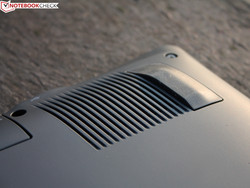
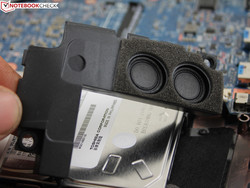
Acer installs a total of four speakers and two woofers in its V 15 Nitro. That leads to a differentiated sound in games and music, and low pitches are rendered just like trebles. A subwoofer could have improved that even more, but this sound is first rate in the comparison of multimedia laptops. Consequently, we give a very good partial rating in audio.
The microphone also has a part in that. The audio recordings let the tester prick up his ears because we have rarely achieved such a clear, noise-free voice recording with a laptop. The dual-array microphone is on the webcam's left (two small openings), and records speech impeccably without any additional fine-tuning - regardless whether the speaker sits almost a meter (~3 feet) away from the Nitro 15 or runs around the room at a distance of 2-3 meters (~6-10 feet). The volume did not decrease very much even when facing a window and the recording remains noise-free.
Energy Management
Power Consumption
The Skylake power consumption only differs insignificantly from the Broadwell model; two watts difference when idle is little advantage. The 45-watt models consume a bit more power when idle, although MSI's PE60 and Lenovo's Y50-70 are not outstanding. Asus' GL552JX is exemplary, as it drains as little power from the outlet as our ULV review sample. The power consumption increases notably under load. The biggest differences to standard voltage are found here.
| Acer VN7-572G GeForce GTX 950M, 6500U, Lite-On CV1-8B128 | Acer VN7-571G GeForce GTX 850M, 5200U, Seagate ST500LM000 Solid State Hybrid Drive | Asus GL552JX GeForce GTX 950M, 4720HQ, Micron M600 MTFDDAV128MBF | Asus N551JW GeForce GTX 960M, 4720HQ, Kingston SMSM151S3128GD | MSI PE60 GeForce GTX 960M, 4210H, HGST Travelstar 7K1000 HTS721010A9E630 | Lenovo Y50-70 GeForce GTX 860M, 4710HQ, Samsung SSD PM851 512 GB MZ7TE512HMHP | |
|---|---|---|---|---|---|---|
| Power Consumption | -5% | -20% | -35% | -148% | -63% | |
| Idle Minimum * | 5.2 | 5.4 -4% | 6.2 -19% | 7.4 -42% | 21.8 -319% | 10.7 -106% |
| Idle Average * | 9.4 | 11.5 -22% | 10.3 -10% | 11.9 -27% | 26.1 -178% | 14.7 -56% |
| Idle Maximum * | 10.8 | 12.8 -19% | 12.2 -13% | 13.8 -28% | 26.6 -146% | 18.2 -69% |
| Load Average * | 60 | 48.6 19% | 77 -28% | 95.9 -60% | 88.5 -48% | 85.1 -42% |
| Load Maximum * | 80.9 | 79.8 1% | 105 -30% | 93.7 -16% | 119.7 -48% | 114.3 -41% |
* ... smaller is better
| Off / Standby | |
| Idle | |
| Load |
|
Battery Runtime
Unfortunately, the review sample's 52.5 Wh battery no longer achieves the brilliant 7:30 hours of runtime (Wi-Fi test) of the VN7-571G (52 Wh). We could not really discover a reason for that - both batteries have the same capacity and the idle power consumption does not differ significantly from the predecessor. Only 10 watts more are needed under low loads. The predecessor’s better battery life is also evident in load, and thus we can exclude a measurement error. The idle runtimes are barely different.
| Acer VN7-572G 52 Wh | Acer VN7-571G 52 Wh | Asus GL552JX 48 Wh | Asus N551JW 56 Wh | MSI PE60 42 Wh | |
|---|---|---|---|---|---|
| Battery Runtime | 22% | -41% | -31% | -45% | |
| Reader / Idle | 761 | 797 5% | 223 -71% | 345 -55% | |
| WiFi v1.3 | 359 | 448 25% | 221 -38% | 246 -31% | 168 -53% |
| Load | 118 | 161 36% | 100 -15% | 85 -28% |
Pros
Cons
Verdict
Acer seamlessly continues its successful multimedia (or gaming) lineup that debuted late 2014 with its Aspire VN7-572G. The virtues of the first generation (Haswell, Broadwell) have been maintained - except for the battery life. The Soft Touch plastic chassis and the four speakers remain just as the backlit keyboard suitable even for prolific writers. USB Type C is new, but it only achieves 3.0 speeds for the lack of a 3.1 controller on the part of Skylake. Acer naturally leaves the very good non-glare IPS screen untouched, and it again has very good qualities.
The Skylake SoC performance is slightly higher than Broadwell, but also much lower than the Haswell/Skylake 45-watt models. Deciding between the Black Edition with an i7-6700HQ or the standard Nitro with a 15-watt 6500U is not as much a question about system performance. That is roughly on par. First specialized applications that need multiple threads/processing cores, such as some games, will runs notably faster on the Black Edition.
The Aspire V 15 Nitro is a well-composed bundle of technical high performance and build. The drawbacks are rather negligible.
Acer Aspire VN7-572G-72L0
-
12/09/2016 v6(old)
Sebastian Jentsch


 Deutsch
Deutsch English
English Español
Español Français
Français Italiano
Italiano Nederlands
Nederlands Polski
Polski Português
Português Русский
Русский Türkçe
Türkçe Svenska
Svenska Chinese
Chinese Magyar
Magyar